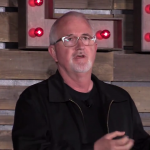Imagine this unhappy scenario: you founded a conscious company with the support of impact investors. You had a great team that loved working together. You were ready to catalyze positive change with carefully designed plans and products. You signed agreements and hit the ground running. But the ink was barely dry on the contracts when an economic downturn turned customer flow into a trickle and a key vendor changed management. The vendor’s new leadership doesn’t subscribe to the environmentally friendly policies of its predecessors. They’ve begun using environmentally unsustainable methods to manufacture a key ingredient of your product. Looking for another supplier, you discovered that the next best option is twice as expensive.
This is the sort of crisis that tests the conscious values of a company’s leadership. Suddenly, focus narrows onto profitability. Many companies fall into conventional business practices from habit or because they don’t know what else to do. Financial recovery becomes the sole priority as visionary values fade into the background or vanish altogether. When the financial terrain gets rocky, how do we stay true to our purpose and values while “taking care of business”?
To inoculate a conscious company against “values atrophy,” we must find a way to integrate purpose and values into the company’s operational logic. The early honeymoon and harmony period of planning and formation, when we are strongly connected to purpose and values, is the time to build our “why” into the DNA of the business by conscious design.
Your legal structure safeguards the integrity of your company’s DNA. “Legal structure” includes your formation documents, funding agreements, and the array of contracts every business has with employees, vendors, customers, and other stakeholders. Conventional business draws on the power of the legal system to set and enforce the structure of decision making. Conscious companies can do the same.
Step 1 – Choose a Conscious Lawyer
Too often, businesses see lawyers as a necessary evil … or maybe just evil. Lawyers can help you influence how your company interfaces with the legal system; however, conventional lawyers may not fully understand the unique needs of a conscious company. Hiring or training a conscious lawyer is a crucial strategic choice for establishing and maintaining purpose-driven values and culture.
When searching for a conscious lawyer, look for descriptive terms like “collaborative,” “integrative,” or even “cooperative.” Ask questions about their values and beliefs and their approach to conflicts. Conscious lawyers often have advanced communications training and other skills beyond standard legal knowledge, and can provide important insights into how the legal system impacts your company’s purpose. They rarely see jumping to litigation as the first response to a problem.
Step 2 – Consider a Conscious Corporate Structure
In a business’s formation stages, a conscious corporate structure can be part of the plan and design. Formal Benefit Corporations can integrate social impact, the environment, and stakeholders’ needs into the company’s legally defined goals. In the US, 30 states plus the District of Columbia provide for this structure. Forty-two countries provide a similar option.
Step 3 – Create Legal Documents for Sustained Consciousness
In addition to a formal corporate structure, legal documents can be used to sustain the shift from conventional to conscious business practices. Every contract is considered the “private law” of the parties. So long as it does not conflict with laws of the larger system or public policy, the rules and systems we put in our written contracts will be enforced. Lawyers sometimes forget or are not aware how much leeway we have to design our own legal systems using contracts.
Typical contract negotiation and drafting tries to foresee and pre-solve every potential problem. A conscious approach replaces unwieldy “predict and control” schemes with “sense and respond” systems for dealing with unpredictable challenges and controversies. Rather than pages of text that set out what will happen and who will be punished if a hypothetical unpleasant event occurs, the documents can say how the event will be resolved in a conscious and purposeful manner. Many pages can be replaced with a framework that supports flexibility and agility, establishing an approach that deals with the actual problem, not many possible nightmare scenarios. We can even build the capacity to shift crisis and conflict mindsets from destructive combativeness to conscious and collaborative creativity.
All contract language should provide clarity about obligations, exchange of value, milestones, and the parameters for dispute resolution. A “conscious contract” has three additional elements:
1 // Touchstone:
A clear, written expression of the parties’ core motivations, values, principles, constraints, and imperatives. The Touchstone is the result of an engaged and robust conversation through which the parties calibrate alignment of their respective visions and values. In times of crisis, when emotions are heightened and the slide into non-consciousness threatens, the Touchstone reminds and reorients the parties to the “why” at the heart of their efforts and relationship. It shifts the contract from a contest to a partnership in service of a shared goal. For example, Linda’s contract with her clients begins with: “I envision a world where the power of love has replaced the love of power. This vision includes a legal system that inspires and supports sustainable, beneficial, and regenerative behaviors, relationships, and enterprises — a system that allows individuals, organizations, and communities to conduct all their legal affairs in alignment with their values, their principles, and their vision for a better world.”
2 // Addressing Change and Engaging Disagreement (ACED) provisions:
Neuroscience tells us our analytical brains can’t solve problems when under stress. Most of us need a firm place to stand, a frame of reference to orient us, and a recipe for what to do in crisis. Even conscious people need support to avoid falling into habitual, conventional approaches.
ACED provisions lay out the customized procedure the parties choose for dealing with their conflicts, interrupting habitual, unconscious reactions to crisis, and orienting problem-solving along creative rather than destructive logic paths. What’s our early alert system for sensing rising tension and engaging with it before it gets out of hand? When disruptive change occurs, what is our procedure for addressing it quickly? Importantly, ACED provisions link to the Touchstone so that decisions and course corrections continually orient to and align with core values, purpose, and meaning.
3 // Condition Precedent:
The Condition Precedent harnesses the power of the larger legal system. In this provision the parties make a legally enforceable commitment that, before they turn to any other process or procedure for dispute resolution (e.g., before going to court!), they will engage in their designated ACED process, working together to co-design solutions that align with Touchstone criteria. It triggers systemic mechanisms that help us shift out of habitual mindsets, returning everyone’s focus to what we agree really matters and giving us the power to co-create our own ideal resolution — one that works for everyone.
In the example we opened with, having “conscious contracts” would have made a crucial difference. When hard times came, you could turn to the documents. There, you would find your own step-by-step process, a recipe for whom to alert and how to engage together in problem-solving rather than arguments or threats. Perhaps your ACED would call for a meeting of key people at the first sign of trouble. Your early-response team would have the Touchstone already in place to provide the criteria by which all proposals and options could be evaluated. Your conscious lawyer would have helped you make core values clear in your agreements and governance documents. The vendor contract would include a commitment to environmentally sustainable methods and a process allowing for you and the vendor to grapple with designing solutions rather than with each other. Investors and managers would be signed on ahead of time to your process for honoring purpose and meaning while designing viable financial solutions. Instead of devolving into backward-looking, blame-assigning exercises in frustration, your conscious lawyer would help you and your stakeholders shift into focused creativity based on the foundations and framework set out in the existing documents. What might have been a disaster becomes a stimulus for creative response and innovation without loss of dedication to vision and purpose.
We don’t have to relinquish our power to a non-conscious system or process. We can create our own “private law” that keeps us in the driver’s seat and puts purpose and meaning on equal footing with other priorities when crises or conflicts erupt. We can use the legal structure to reawaken our connection to purpose and trigger creative, collaborative design-thinking in response to disruptive change.






